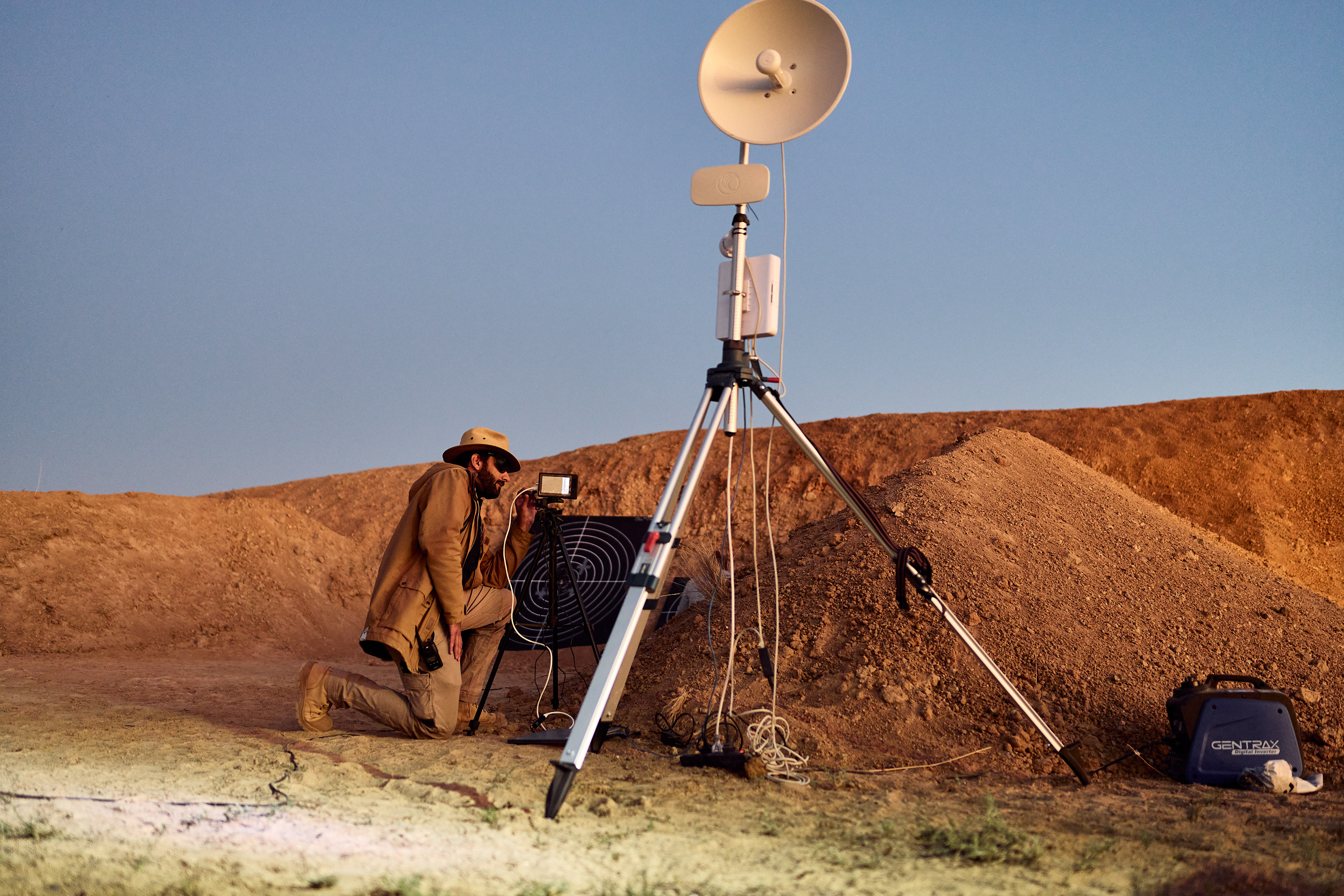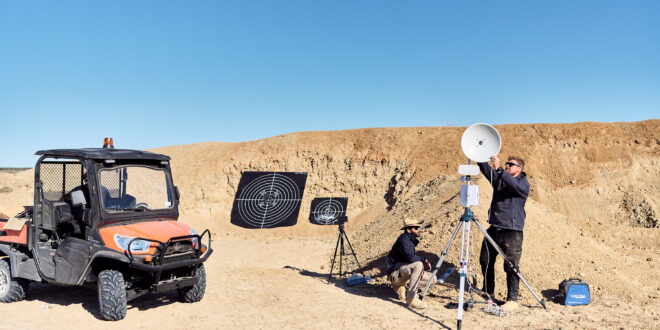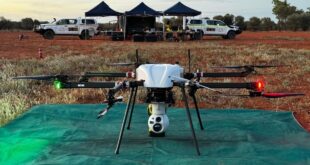On a remote weapons range in far western New South Wales, technicians test-fire a lethal but invisible laser to bring down an unmanned aerial vehicle, or drone, in what’s believed to be the first demonstration of its kind on Australian soil.
Key points:
- A directed-energy (DE) weapon concentrates large amounts of electromagnetic energy on a remote target in the form of a laser
- The Albanese government said DE technology would be a priority in its new Advanced Strategic Capabilities Accelerator program
- One academic believes DE weapons could hold numerous advantages over existing weapons
Working in dusty and hot conditions, employees of a Canberra-based defence company are trying to refine directed-energy (DE) technology, which in coming years is expected to be deployed on battlefields across the world.
A DE weapon concentrates large amounts of electromagnetic energy on a remote target, in the form of light (a laser).
Alternatively, microwaves and radio waves can also be used.
“Lasers offer a lot of advantages; they’re very good at hitting high-speed targets,” explains executive vice-president for EOS Defence Systems Matt Jones.
“If you can keep energy up to a laser you can keep engaging the target — so, in a traditional sense, against traditional engagement systems it offers some significant advantages.”
Directed energy is categorised as a form of electronic warfare technology and is one of the advanced capabilities that is a focus of Pillar 2 for the AUKUS partnership.
Earlier this year, the Albanese government also announced that directed-energy technology would be a priority in its new $3.4 billion Advanced Strategic Capabilities Accelerator (ASCA) program.
Over the past three years, the Pentagon is reported to have spent an average of $US1 billion ($A1.5 billion) on developing DE technology, which the US and other nations have spent decades pursuing.
“It’s a very difficult technology to implement and the fact that people have been investigating it since the early 1960s really indicates that,” University of New South Wales associate professor Sean O’Byrne says.
“They generate a lot of heat, and that heat can actually damage the device itself.

“So, there’s a fine balance between how much light you can produce and damaging the thing that’s producing the light — and on the battlefield, that’s a significant issue.”
Despite the difficulties with developing directed-energy weapons, Professor O’Byrne believes they could eventually hold numerous advantages over existing weapons that require traditional ammunition.
“They effectively try to melt or bake the object that they’re hitting – you don’t need to have the equivalent of bullets — it’s all light,” he said.
“Because it’s directed, you get no collateral damage from an explosion or something like that, so you can direct it at a target and not hit things that you don’t want to hit.
“So, those are significant advantages – but there are commensurate disadvantages as well.”
At the Klondyke Range Complex (around 800 kilometres north-west of Sydney) the ABC was last month invited to watch as EOS unleashed a developmental 34-kilowatt high energy laser system against small quadcopter drones out to distances of 1,000 metres and beyond.
From inside a protective shipping container with window shutters down, observers wearing protective eyewear witnessed a DJI Mavic drone being targeted by a directed-energy counter-Unmanned Aerial System (UAS) weapon.
When the moving target is hit by the laser, its internal circuits perform one reset where the drone loses altitude and then recovers, before the flight controls are melted and it can no longer maintain flight – a successful “aerodynamic kill”.
Despite the growing importance of unmanned aerial vehicles, as demonstrated by the Ukrainian conflict, the Australian Defence Force still has no counter-drone capability within its current Integrated Investment Plan.
 Unmanned Aerial Vehicle The latest drone news
Unmanned Aerial Vehicle The latest drone news





